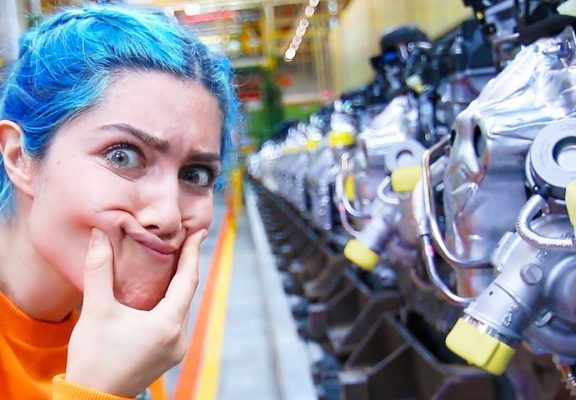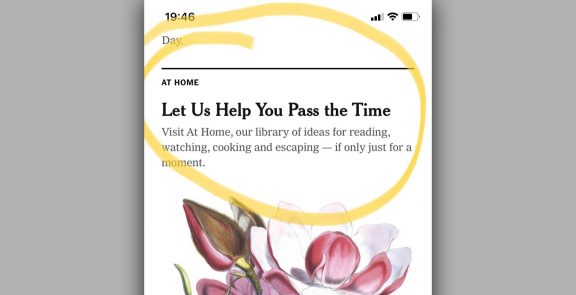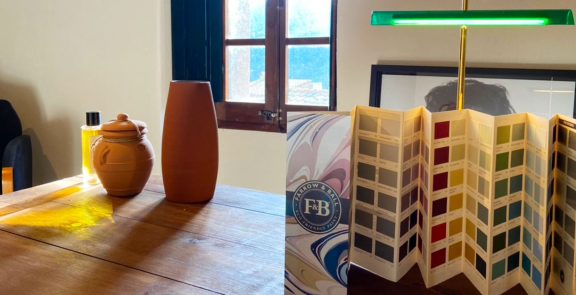

FORD: How can we legitimise brand legacies today?
IN A NUTSHELL:
We have begun to see legacy brands that legitimise themselves by using new strategies to highlight their history and use it as an asset to differentiate themselves in line with the demands of the contemporary consumer.
THE GREAT STRATEGIC TAKEOUT:
Historically, brand spaces have always been one of the great tools for companies to build relevant and distinctive discourse about their origin, legacy and contribution. This is why these spaces have been considered ideal for exposing and explaining their essence and their values.
The current situation, boosted by COVID, has created an opportunity for brands and companies to complement strategies that require physicalisation and the use of museum codes. Opportunities are opening up to create new ways of presenting the brand’s history and its contribution to the trends of the time: putting the contemporary consumer at its heart, collaborating, with a ‘humanity’ that acquires a central weight through the new channels, which makes it possible to connect truthfully with new habits through accessible codes.
Why should I read this?
Considering new ways of sharing brand and company history makes them less totemic and more communicative. Their impact is greater and better, as they stand out more, and it helps to build equity from a contemporary and inclusive perspective.
What are we talking about?
The collaboration between Ford, a leader in the automotive industry, and Ter, a creator of content with expertise in linking pop culture to loftier themes such as architecture, art and design, presents potential new avenues for sharing brand and company histories.
These links, in addition to being the strategy of some legacy brands to legitimise their history more significantly and connect with a more diverse audience (millions of subscribers, mostly Gen Z and millennials), are also a success story that connects with different contemporary trends:
- Cooperation in creating content: creation is not only collaborative but has a clear objective of generating quality content that transcends a point of view that can be egocentric and self-aggrandising. We go beyond taking advantage of an influencer’s impact base to make a message visible, to collaborate in a conscientiously constructed story that interprets the brand’s history from an external and personal point of view.
- With humanity: personifying the brand and making its history “live”, not as a pristine, static narrative, but through different characters and protagonists who are part of the present (managers, staff, etc.) and who reinterpret and work with this heritage and this legacy in their day-to-day lives.
- New channels: relegating the museum-like and physicalised codes typical of brand spaces, which often generate a certain distance from the public (because of their introspective attitude and because they position brands as experts or educators on a subject), giving the brand a voice from elsewhere through more dynamic and credible channels.
- Connecting with the new reality: a situation that, boosted by COVID, has brought with it and accelerated new habits that some brands have managed to capitalise on. This strategy has an ally in technology, which allows brand history to reach the consumer in a fluid way, without impositions or obligations (the difference between being able to connect with brand histories from home versus having to go proactively to a brand space).
- With accessible and contemporary codes: the brand lets another person speak for it, using more accessible, less rigid and more personal language. It also leaves aside the brand manual, with its limitations, to adapt to the collaborator’s aesthetic codes and rhythms.
- Truthful: accuracy is not jeopardised. Collaborating and interpreting a story through other channels and with other codes and languages never means neglecting the precision and truthfulness of the content.
In short, there is a new way to highlight heritage and brand history that is far from the stiff, egocentric museum strategy and allows brands to legitimise and differentiate themselves in contemporary times.
Links and what to pay attention to:
Dentro de una FÁBRICA de coches 🚗👀La revolución de la Arquitectura Moderna
101 Dálmatas: la técnica de animación que revolucionó el cine 🎨✍️
- The trust that the brand places in the collaborator. The intimate parts of its history and its present are shown through the interpretation, editing and voice of an outsider.
- The participation of different key stakeholders. The history of the brand is also defined by its present and by the people who form it today.
- The importance of building relevant audio-visual content with an impact that speaks to new generations.
- How it connects with many contemporary trends: collaboration, new channels, codes, etc.
- How, when brand history and legacy are interesting, the same collaborator can often tell your story and legitimise themselves without having to formalise the collaboration (Ref 2nd link: the story of Disney animation).
WHY YOU SHOULD BE INTERESTED:
Because, as brands, we can review the role we want our history to play and the way we position ourselves and build legitimacy through it.
What tension does it resolve?
The contemporary consumer’s search for a more honest relationship with brands and for content and experiences that connect with their new habits and demands.
From a strategic perspective:
An approach to new collaborative channels that opens the door for brands to review how they want to tell their story and generate equity with it.
Who might be interested?
Any category. Mainly legacy brands and companies that want to connect more deeply and effectively with new generations, aware of the value their history has in the generation of “Brand Power.”
Where do I implement it?
When we seek to make legacy and historical heritage an asset that generates/strengthens identity and relevance.
How do I implement it?
By building a coherent and rigorous narrative through new channels, making collaboration a strategic and creative resource of the first order.
How innovative is it?
Transcending brand space as the only way to legitimise brand history is an innovation that is starting to be seen in different categories.
Key concepts:
Brand history, heritage, legacy, channels, brand space, collaboration, contemporary consumer, marketing
I WANT IT FOR MY COMPANY/BRAND. WHAT DO I NEED TO KNOW?
Who is using it already?
Companies and brands that have begun to raise the profile of their history through new channels and proposals. Another example is House of Gucci: Ridley Scott’s film starring Lady Gaga and Jared Leto, among others, which reviews the brand’s history and will be reaching cinemas soon.
Things to keep in mind:
Avoid forcing the story and let collaborators add their external perspective, so that it enriches the story and adds another point of view. The more freedom of creation, the more credible and contemporary the result will be.
How do I get a clearer idea?
By analysing the content of Ter, where collaboration is very significant, as it marks a before and after in legitimising brand histories.
How do I share it with my network?
“Do we know how to legitimise and differentiate our history by linking ourselves with the new contemporary consumer?”




